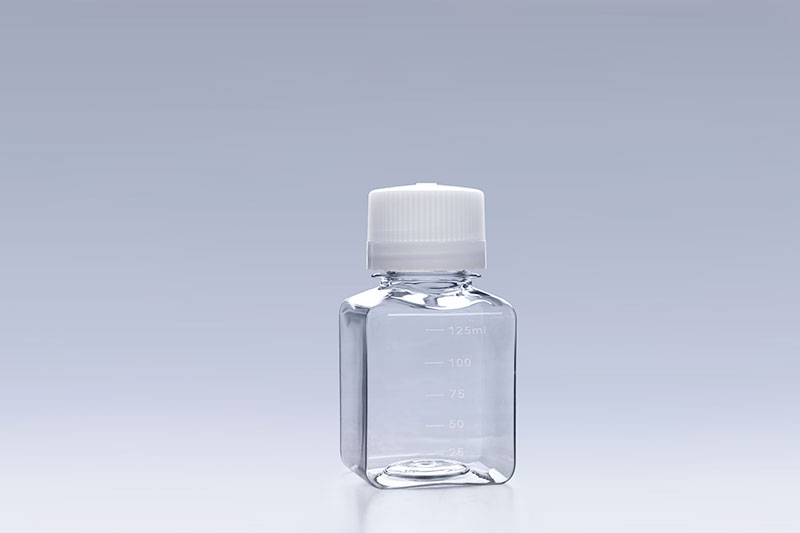Introduction of three kinds of sediment in square petg media bottles
Serum is a commonly used nutrient substance when culturing cells, and the quality of serum is directly related to the growth status of cells. Sometimes we will find that there are flocculent sediments in the square petg media bottles. In fact, there is no need to be too nervous when this happens. These sediments are mainly the following three types of substances:
1. Fibrin: It is a relatively large precipitate that often appears, which can reach 1-2mm and can be observed with the naked eye. Because serum is collected and processed quickly at low temperatures, some fibrinogen (the soluble precursor to flocculent fibrin) remains dissolved during processing and will Fibrin precipitates from clotting in serum bottles.
 FuDau 125ml Square Petg Media Bottles
FuDau 125ml Square Petg Media Bottles
2. Calcium phosphate: It is also a common precipitate, which usually makes the serum appear turbid, and it will increase when cultured at 37°C. This deposit looks like tiny black dots under an inverted microscope, which are often mistaken for microbial contamination because they appear to be mobile due to Brownian motion.
3. Cholesterol, fatty acid esters, and some proteins: they are also common causes of precipitates in serum.
The above are the three common sediments in square petg media bottles. Generally, the sediments will not affect the cell culture, but if the cells have special needs for nutrients, the components in the sediments cannot be absorbed by the cells, which may cause the cells to grow poorly.
评论
发表评论